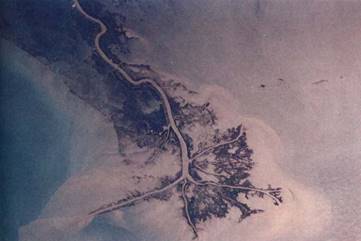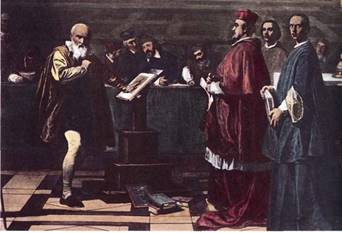


 النبات
النبات
 الحيوان
الحيوان
 الأحياء المجهرية
الأحياء المجهرية
 علم الأمراض
علم الأمراض
 التقانة الإحيائية
التقانة الإحيائية
 التقنية الحيوية المكروبية
التقنية الحيوية المكروبية
 التقنية الحياتية النانوية
التقنية الحياتية النانوية
 علم الأجنة
علم الأجنة
 الأحياء الجزيئي
الأحياء الجزيئي
 علم وظائف الأعضاء
علم وظائف الأعضاء
 الغدد
الغدد
 المضادات الحيوية
المضادات الحيوية|
Read More
Date: 23-10-2016
Date: 29-10-2016
Date: 20-10-2016
|
Introduction to Population Genetics and Evolution
Evolution is the gradual conversion of one species into one or, in some cases, several new species. It occurs for the most part by natural selection: Mutations cause new alleles or new genes to arise which affect the fitness of the individual, making it less or more adapted to the environment than other individuals without the new allele or gene. If the mutation is deleterious, the individual may grow or reproduce slowly or even die early without reproducing. Either way, the new allele has less chance of increasing in the population and is more likely to be eliminated as the individuals that carry it die out. If the mutation is beneficial, the individual should grow and reproduce better than other individuals, producing a greater number of gametes and ultimately a greater number of seeds than the other individuals. Abundance of the new allele increases relative to the original alleles (Fig. 1). As evolution by natural selection continues, the types and abundances of alleles present in the species change, and consequently the phenotype also changes.

FIGURE 1: (a) The population in this diagram originally consisted of 29 individuals, 20 of which carried allele 1 and 9 allele 2. Allele 2 produces individuals that are more vigorous, so allele 2 has increased in the next generation (b) from 9/29 = 31% to 30/38 = 78.9%. Allele 2 produces a phenotype (triangle) distinct from allele 1 (round), so as the allele frequency of the population changes, so does the phenotype. In this diagram, the extra vigor of allele 2 is allowing the population as a whole to enlarge, from 29 to 38 individuals, perhaps by crowding out other species or by entering new habitats.
Evolution is an extremely slow process that may require thousands of generations and millions of years to produce obvious changes in a species. Because it is so slow compared with the length of a human lifetime, it is easy to understand that it went undetected until recently, just as continental drift, mountain building, and valley formation by erosion went unnoticed. A human lifetime is too short to perceive changes in these processes; even the full history of accurate observation and detailed record keeping is not long enough to detect the fact that, since the times of the ancient Chinese, Sumerians, and Egyptians, continents have moved closer together, mountains have risen higher, and species of plants and animals have changed. It is not surprising that people thought in terms of a constant, unchanging world composed of specific mountain ranges, rivers, lakes, continents, plants, and animals.
During the explorations of Africa, the Americas, and Australia near the time of Columbus, so many plants and animals were discovered that people could not help but notice the remarkable similarities between many species. The various types of roses resembled each other more than they resembled other plants, just as did the many new types of lilies, orchids, and so on. People began to realize that giant basins of sediment, such as the deltas at the mouth of the Nile, the Ganges, and the Mississippi, held enough eroded material to account for whole mountain ranges; the concept of a changing landscape—geological evolution—began to develop (Fig. 2).

FIGURE 2:As the science of geology developed, it was soon realized that river deltas, such as this delta of the Mississippi, contained so much sediment that they must represent the transformation of landscapes, that mountain ranges must have eroded and no longer exist. But this means that the world is not constant, as God had supposedly created it, but changing and evolving. (NASA).
An important corollary was the realization that in order for so much sediment to have formed, Earth must be millions (actually billions) of years old, not merely 6000 years old as had been calculated from the genealogy of the Bock of Genesis in the Old Testament. This is one of those discoveries that is easy for us to underappreciate; the quantity of sediments proved that either Earth had a very long history or God had created sediments. This gave theologians a difficult dilemma and caused many people to be even more skeptical of priestly interpretations of natural phenomena. One of the areas of doubt was the idea that all species had been created at once. Everyone was vividly aware that the Church already had made a grave error by censuring Galileo, insisting that Earth was the center of the universe and that the sun, planets, and stars all revolved around it (Fig.3).

FIGURE .3:Galileo Before the Inquisition. Painting by Robert Fleury, 1847. Kepler, Newton, and Galileo proved that the sun is the center of the solar system, but church doctrine considered this heresy; as the home of the one organism created in the image of God, the Earth should be the center of the Universe. A board of inquiry forced Galileo to recant his belief in a sun-centered solar system and placed him under house arrest for the rest of his life. Attempts were made to confiscate and burn all copies of his book; only a few survived. Less famous scientists were frequently punished more severely. Misinterpretation of the physical world by religious doctrine is not a fundamental aspect of religion, but rather the rejection of observation and experimentation in favor of speculation without confirmation. Ancient Greeks also came to many erroneous conclusions for the same reason. (The Bettmann Archive).
As careful observations of nature became common after the Renaissance and as the scientific method proved to be an accurate method for analysis, the concept of the evolution of species became widespread. Scientists searched for an understanding of the mechanism by which it occurred. Finally, Alfred Russel Wallace and Charles Darwin independently discovered the basis—natural selection—in the mid-f 800s, the critical explanation being given in Darwin's Origin of Species published in 1859. The concept of natural selection—survival of the fittest—had an electrifying effect on all biologists and led to a revolution in all aspects of thinking. Suddenly, many observations had a rational explanation; every character could be interpreted in terms of whether it made a species less or more adapted to its environment. And because so many environments exist, it is logical to expect that many types of plants and animals should also exist, each having genotypes and phenotypes that make it particularly adapted to its own environment. Prior to the discovery of natural selection, flowers were thought to have been created by God for the delight of the human eye and nose; that philosophy did little to explain bilaterally symmetrical flowers inferior ovaries, or wind pollination. Science had been greatly hampered by trying to interpret the world in terms of the mind of God and what had been created to feed, clothe, and house the descendants of Adam and Eve.
Fortunately, the discovery of evolution by natural selection happened at about the same time as other critical discoveries—the discovery of genes and chromosomes, cd theory, proving that spontaneous generation does not occur, sophisticated hydroponic cultures of plants, the discovery of enzymes and the carrying out of some metabolic steps in a test tube without living cells, and the artificial synthesis of biological compounds. All these combined to move biology firmly out of the realm of metaphysics/theology and into that of scientific analysis and interpretation.
For those of you who believe in divine creation rather than evolution by natural selection, keep in mind that all of our experience has shown the scientific method to be infinitely superior to theological interpretation of scriptures for understanding and predicting the nature of the physical/biological world. Equally important, only ethical/philosophical systems allow us to understand and solve moral problems; science cannot do that. It is not logical or consistent for a person to accept certain discoveries of science (photosynthesis, DNA, respiration, vessels, sieve tubes) while rejecting others (evolution) if one type of discovery is just as well-documented as the other.



|
|
|
|
للعاملين في الليل.. حيلة صحية تجنبكم خطر هذا النوع من العمل
|
|
|
|
|
|
|
"ناسا" تحتفي برائد الفضاء السوفياتي يوري غاغارين
|
|
|
|
|
|
|
نحو شراكة وطنية متكاملة.. الأمين العام للعتبة الحسينية يبحث مع وكيل وزارة الخارجية آفاق التعاون المؤسسي
|
|
|